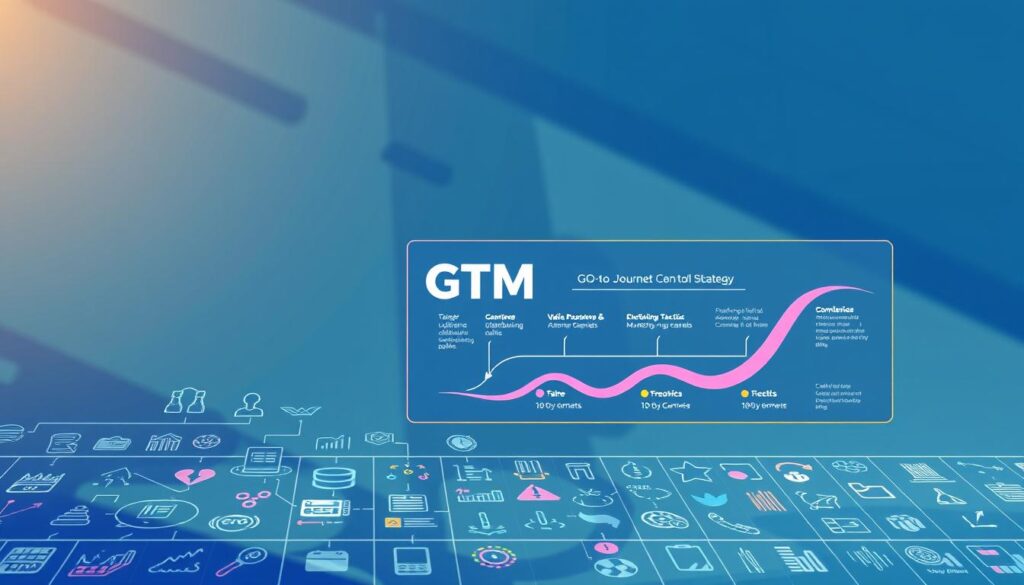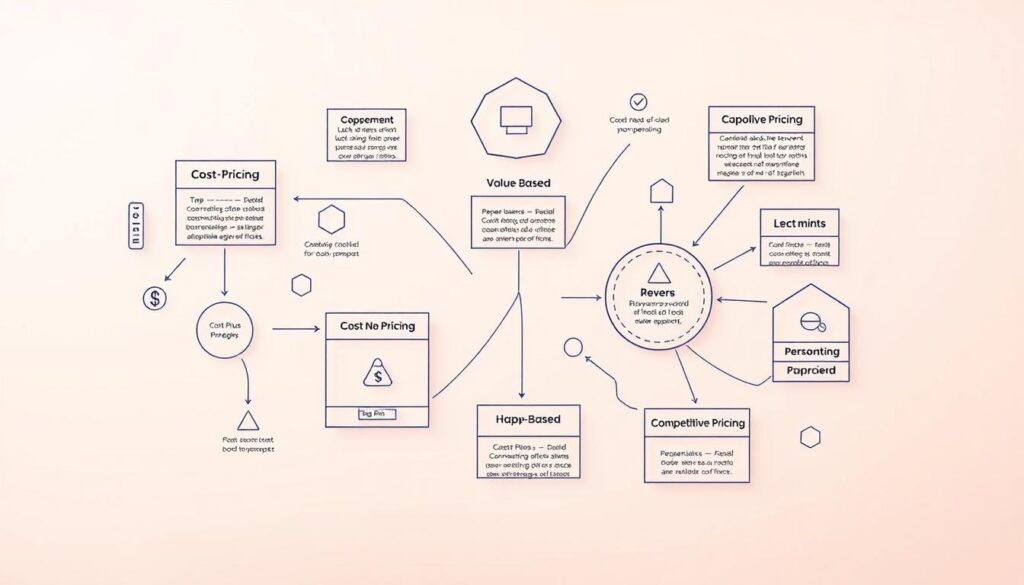Launching a new offering requires more than just a great idea—it demands a structured approach that aligns every aspect of a business. Modern companies operate in crowded digital environments where consumers expect personalized experiences and immediate value. Without careful planning, even innovative products risk getting lost in the noise.
A well-designed strategy bridges the gap between development and commercial viability. It combines audience insights, competitive analysis, and channel optimization to create targeted campaigns. This method ensures resources focus on high-impact activities rather than guesswork.
Consumer behavior continues evolving rapidly, requiring businesses to balance data-driven decisions with creative messaging. Traditional marketing principles remain relevant but must adapt to digital platforms where engagement happens instantly. The goal isn’t just visibility—it’s meaningful connections that drive early adoption.
Key Takeaways
- Effective planning aligns product positioning with audience needs
- Digital-first tactics enable precise targeting and faster feedback
- Launch success depends on differentiating from competitors early
- Integrated approaches combine sales, marketing, and customer insights
- Ongoing optimization trumps static long-term campaigns
Understanding the Go-to-Market Framework
A successful product introduction relies on aligning internal teams with external realities. The GTM framework acts as a connective tissue between development cycles and real-world customer needs. Unlike broad marketing plans, it zeroes in on launch specifics while balancing speed and precision.
Defining GTM Concepts
This approach combines three critical elements: product expertise, market intelligence, and operational coordination. While traditional strategies might prioritize brand awareness, GTM plans emphasize measurable entry points. For example:
| GTM Strategy | General Marketing |
|---|---|
| Focuses on launch timing & competitive gaps | Targets ongoing customer engagement |
| Owned by product marketers | Led by brand managers |
| Integrates sales enablement tools | Prioritizes content campaigns |
Bridging Product and Marketing Functions
Cross-departmental collaboration separates functional launches from market-leading ones. Development teams provide technical specs, while marketers translate features into benefits. Regular alignment meetings prevent miscommunication during critical phases.
Effective frameworks also map customer journey touchpoints early. This ensures pricing models, support resources, and promotional tactics work cohesively. When teams share data dashboards, they spot adoption barriers faster.
Essential Elements of GTM Strategy Development
Building a winning market entry plan requires dissecting core components that drive visibility and adoption. These elements form interconnected layers—each influencing how audiences perceive your solution and how quickly it gains traction.

Value Proposition and Differentiation
Clarity beats complexity when communicating what makes your offering unique. Effective strategies answer three questions:
- What specific problem does this solve better than alternatives?
- Which customer segments gain measurable benefits?
- How does pricing reflect perceived value?
For example, productivity software might emphasize time savings through automation rather than generic “efficiency improvements.” This precision helps campaigns resonate with high-intent buyers.
Competitive Analysis Basics
Understanding rivals isn’t about imitation—it’s about finding unmet needs. Start by mapping key players using this framework:
| Factor | Your Solution | Top Competitor |
|---|---|---|
| Core Features | AI-driven analytics | Manual reporting |
| Pricing Model | Subscription tiers | One-time purchase |
This comparison highlights opportunities to position your product as the modern choice. Combine these insights with customer feedback loops to refine messaging continuously.
Identifying Your Ideal Customer Profile
B2B purchasing decisions involve an average of 6.8 stakeholders per sale, according to Harvard Business Review. This complexity demands precision in defining who benefits most from your solution. Effective profiling identifies not just company attributes but the human dynamics driving each decision.
Target Audience Segmentation
Modern segmentation moves beyond job titles or industry verticals. It examines how teams adopt technology, prioritize budgets, and navigate approval processes. Consider these critical factors:
| Traditional Approach | Advanced Segmentation |
|---|---|
| Company size | Decision-making speed |
| Industry classification | Risk tolerance levels |
| Annual revenue | Tech stack compatibility |
This shift helps tailor messaging to specific pain points. Teams using outdated systems might value migration support, while tech-forward buyers prioritize integration capabilities.
Building Customer Personas
Each stakeholder in the buying center requires distinct engagement strategies. A gatekeeper needs compliance assurances, while an influencer seeks data to build internal consensus. Map personas using this framework:
| Role | Primary Influence | Messaging Focus |
|---|---|---|
| Decision Maker | Budget control | ROI timelines |
| User | Daily operations | Ease of adoption |
| Influencer | Team alignment | Comparative benefits |
Validating these profiles through customer interviews reduces reliance on assumptions. It reveals hidden adoption barriers and unexpected value drivers.
Crafting a Unique Value Proposition and Messaging
In today’s competitive landscape, clarity in communication separates market leaders from forgotten launches. A value proposition acts as your product’s compass—it guides messaging while anchoring every customer interaction to core benefits. Without this focus, even innovative solutions struggle to cut through market noise.
Key Messaging Techniques
Effective communication adapts to stakeholder roles. Technical users need data-driven proof points, while executives seek ROI timelines. Masterful strategies blend rational arguments with emotional triggers—like security or professional pride—to address both logical and psychological decision drivers.
Aligning Messaging with Customer Pain Points
Successful teams frame product capabilities as solutions to specific frustrations. Instead of listing features, they answer: “How does this reduce late-night work hours?” or “What compliance risks does it eliminate?” This approach transforms generic pitches into targeted value discussions.
Creating Consistent Brand Voice
Uniformity builds trust across touchpoints. Sales scripts should echo website copy, while support teams reinforce key themes identified in your value proposition development. Regular audits ensure marketing materials and product documentation speak the same language.
Advanced teams use customer interviews to refine terminology. When a healthcare client says “patient outcomes” instead of “results,” adopting their language increases message resonance. This precision turns prospects into advocates by demonstrating deep understanding of their world.
Competitive Market Analysis and Positioning
Navigating crowded markets demands more than intuition—it requires decoding competitor moves and unmet needs. Systematic analysis reveals where rivals excel and where their customer experience falters. This intelligence becomes the foundation for carving out defensible territory.
Assessing Competitors’ Strategies
Effective analysis starts by mapping four dimensions: pricing models, feature sets, support quality, and brand perception. Advanced teams use AI-driven competitor analysis tools to track real-time changes in positioning. For example:
| Traditional Approach | Advanced Tactics |
|---|---|
| Manual feature comparisons | Sentiment analysis of customer reviews |
| Price tracking spreadsheets | Dynamic pricing algorithm monitoring |
| Quarterly competitor reports | Social listening for emerging complaints |
Positioning Your New Product Effectively
Winning products address frustrations competitors ignore. A fintech startup might discover banks charge hidden fees—then position itself as the “no-surprise-pricing” solution. This strategy converts market gaps into differentiators.
Successful teams validate positioning through customer perception studies. They ask: “What three words describe [Competitor X]?” Responses reveal whether audiences value speed over customization or reliability over innovation.
Pricing Strategy for Maximum Impact
Profitability hinges on how businesses balance customer expectations with financial realities. A well-calibrated pricing strategy acts as both revenue accelerator and brand differentiator, influencing purchase decisions while protecting margins. Modern companies must weigh multiple models against their product’s lifecycle stage and competitive landscape.

Setting a Competitive Price Point
Five core approaches dominate modern commerce:
| Model | Best For | Risk Factor |
|---|---|---|
| Loss-Leader | Retailers with complementary products | Margin erosion |
| Premium | Brands with strong perceived value | Market size limitations |
| Dynamic | Ecommerce & travel industries | Customer trust issues |
Loss-leader pricing works best when businesses can offset initial discounts through repeat purchases. Electronics retailers often use this tactic—selling consoles below cost to drive game and accessory sales.
Premium models thrive when quality perception outweighs price sensitivity. Luxury skincare brands successfully command 300%+ markups by emphasizing exclusivity and clinical results.
Dynamic algorithms now power 35% of online retail pricing changes daily. While effective for margin optimization, transparency remains critical. Airlines and ride-share companies balance surge pricing with clear communication to maintain trust.
Promotional Tactics and Distribution Channels
Reaching the right audience demands precision in both message delivery and platform selection. Brands must blend behavioral insights with tactical execution to create campaigns that convert casual browsers into committed buyers. This requires understanding where audiences spend time and how they interact with content.
Leveraging Social Media and Paid Advertising
Platform choice directly impacts campaign success. A B2B software company might prioritize LinkedIn for decision-maker outreach, while a fashion retailer focuses on Instagram’s visual storytelling. Paid ads amplify reach but require meticulous audience segmentation—age, interests, and browsing habits all influence engagement rates.
Effective ad strategies track metrics like click-through rates and cost per lead. Allocating budgets to high-performing platforms maximizes ROI. For example, targeted website traffic campaigns using Google Ads often outperform broad social media spends when targeting specific search intents.
Choosing the Right Distribution Model
Distribution determines how smoothly products reach end-users. Consider these models:
- Direct Sales: Ideal for complex solutions needing personalized demos
- E-commerce Platforms: Streamline purchases for standardized goods
- Partner Networks: Expand reach through affiliates or resellers
Hybrid approaches reduce reliance on single channels. A SaaS company might combine app store listings with a partner portal for enterprise clients. Consistency across touchpoints—from product packaging to checkout pages—builds trust and reduces friction.
Building a Collaborative GTM Team
Successful product launches hinge on seamless teamwork across departments. Product experts, sales leaders, and support specialists must align around shared objectives. Regular sync-ups—like weekly sprint reviews—keep priorities visible and adaptable.
Breaking down communication bottlenecks accelerates decision-making. Teams using shared dashboards spot adoption trends faster, while cross-functional workshops bridge knowledge gaps. For example, engineers explaining technical limits help marketers craft realistic timelines.
Trust and accountability form the foundation of high-performing teams. When customer feedback directly informs R&D roadmaps, everyone owns the solution’s success. Clear role definitions prevent overlaps, letting each member focus on their strengths.
Unified teams turn fragmented efforts into measurable impact. By blending diverse perspectives, they create launches that resonate deeper and adapt quicker. This collaborative spirit doesn’t end at release—it fuels continuous refinement long after initial adoption.
FAQ
Why is aligning product and marketing teams critical for GTM success?
Cross-functional alignment ensures consistent messaging and operational efficiency. For example, Salesforce integrates product roadmaps with campaign calendars to maintain unified customer experiences across touchpoints.
How do businesses identify their ideal customer profile effectively?
Companies like HubSpot combine firmographic data with behavioral analytics. This approach layers quantitative metrics (industry, revenue) with qualitative insights from customer interviews to refine targeting precision.
What makes a value proposition stand out in competitive markets?
Apple demonstrates this through outcome-focused messaging. Rather than listing features, they emphasize how products solve specific problems – like privacy-focused positioning against Google’s data-driven models.
When should companies adjust pricing during product launches?
Netflix’s tiered pricing strategy adapts to market saturation. They monitor adoption rates and competitor moves, using A/B testing to validate price changes before full rollout.
Which distribution channels deliver the best ROI for new products?
Adobe shifted from boxed software to cloud-based distribution, matching changing consumer preferences. Analysis should weigh channel costs against target audience accessibility – Amazon uses this for both direct sales and marketplace strategies.
How can brands maintain messaging consistency across platforms?
Coca-Cola’s “One Brand” strategy uses centralized content guidelines with localized adaptations. Their style governs visual elements and tone while allowing regional teams to address cultural nuances.
What metrics matter most in competitive market analysis?
Market share trends and customer retention rates reveal strategic gaps. Microsoft tracks these alongside mindshare metrics through social listening tools to benchmark against Oracle and SAP.
Why do collaborative GTM teams outperform siloed structures?
Google’s Launchpad program brings engineers, marketers, and sales specialists together early. This prevents misalignment in timelines and ensures technical capabilities match promotional claims.



